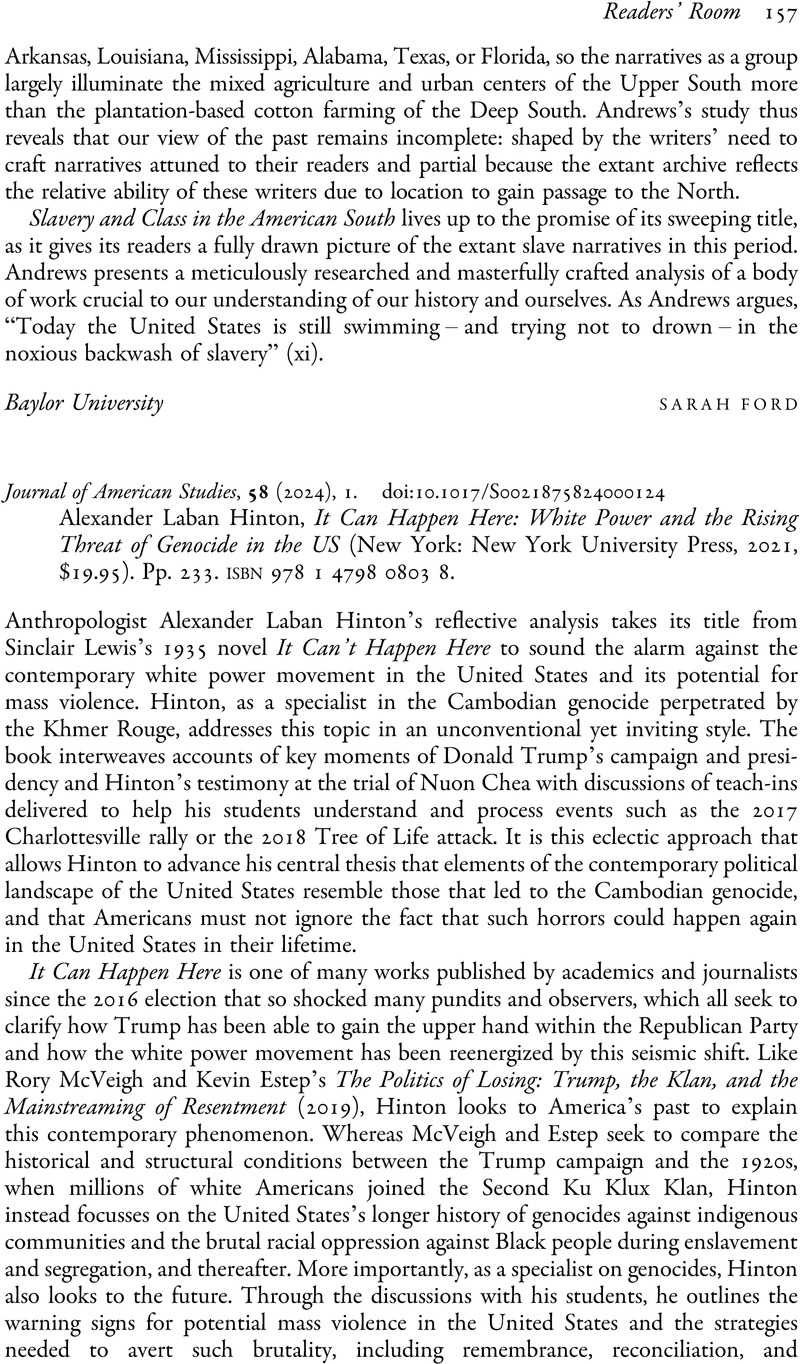No CrossRef data available.
Article contents
Alexander Laban Hinton, It Can Happen Here: White Power and the Rising Threat of Genocide in the US (New York: New York University Press, 2021, $19.95). Pp. 233. isbn 978 1 4798 0803 8.
Review products
Published online by Cambridge University Press: 07 May 2024
Abstract

- Type
- Readers' Room
- Information
- Copyright
- Copyright © The Author(s), 2024. Published by Cambridge University Press in association with British Association for American Studies



